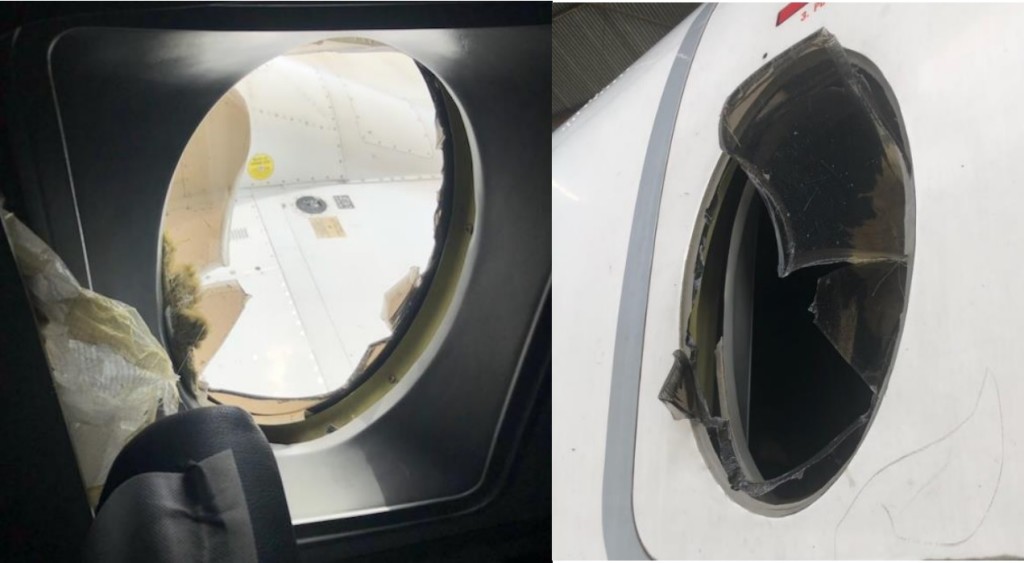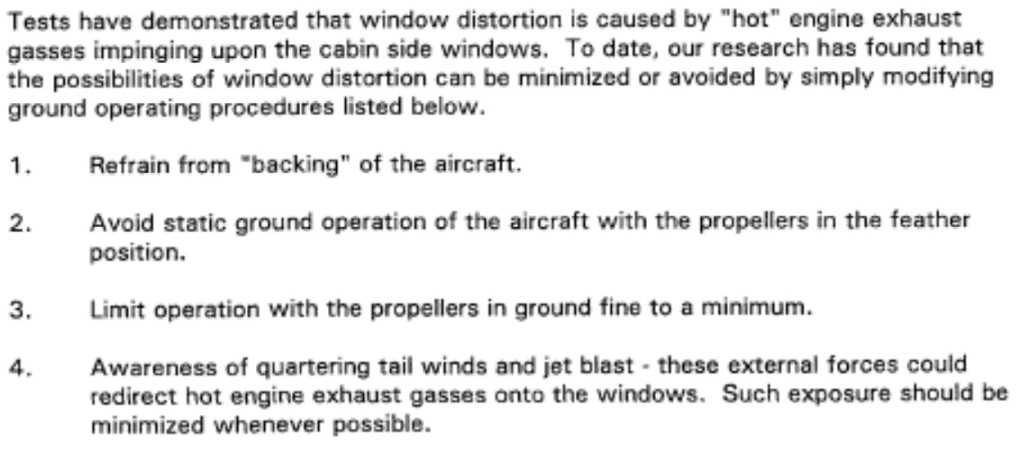B1900D Window Blowout
On 22 October 2018 Federal Airlines Beechcraft B1900D ZS-PHX was in cruise at 20000ft when it suffered an explosive decompression. The aircraft made a safe landing, without injury to the 13 occupants. According to the South African CAA safety investigation report, the decompression was due to the failure of the third cabin window on the right-hand side of the fuselage.
This window was installed in January 2007, approximately 6,000 flying hours earlier. The first two cabin windows on each side of the B1900 are a two-pane. The rest are single-pane windows with a life of 43,600 flight hours or 61,700 pressure cycles.
Laboratory examination revealed that cracking propagated from the outside surface in the centre of the window. The B1900D Aircraft Flight Manual states:
…do not operate the engines with the propellers feathered except during external power starts and propeller feather checks, except that the propellers may be operated in feather at temperatures not to exceed +5°C for a maximum of 3 minutes for the purpose of airframe de-icing.
Beechcraft B1900 Airliner Communiqué no. 30 (issued in December 1993) states:
After a fleet inspection, 8 other windows were rejected in the operator’s fleet.
The SACAA safety message was that:
It is imperative that operators abide by the B1900 communiqué no. 30 during ground operations to avoid excessively heating the cabin windows.
Safety Resources
Our past B1900 safety articles include:
- B1900D Emergency Landing: Maintenance Standards & Practices
- Incorrectly Rigged B1900D Charlotte, NC, 8 January 2003: 21 Fatalities
- Crossed Cables: Colgan Air B1900D N240CJ Maintenance Error
- B1900C PSM+ICR Accident in Pakistan 2010
- Distracted B1900C Wheels Up Landing in the Bahamas
- Operator & FAA Shortcomings in Alaskan B1900 Accident
- Alaska B1900C Accident – Contributory ATC Errors
- UPDATE 3 June 2020: Beechcraft 1900C Landing Gear Collapse at San Antonio, TX




Recent Comments